Conflict Zones
Russian advances in Ukraine slow down despite growing force size | Russia-Ukraine war News
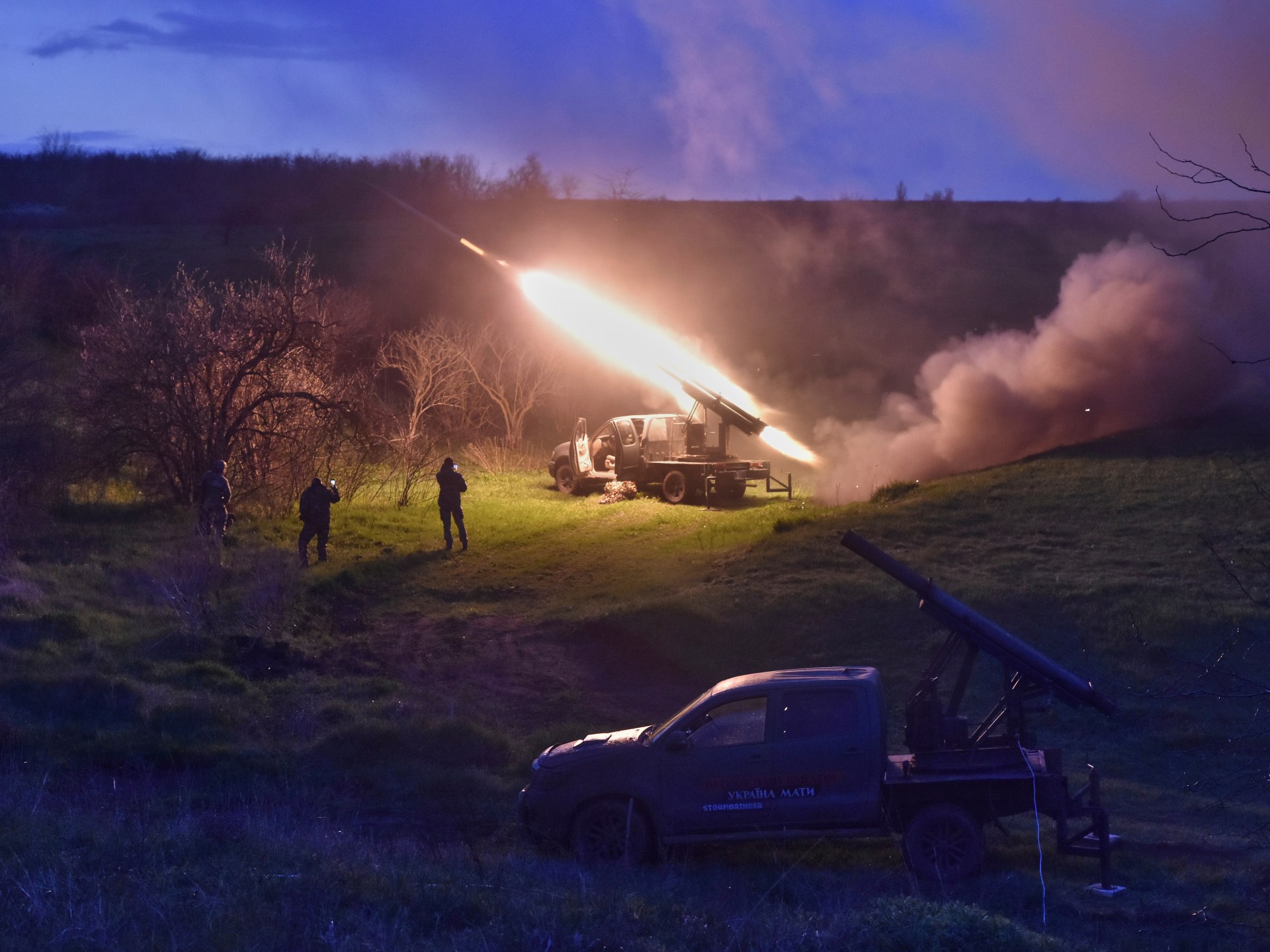
Russia’s territorial gains in Ukraine are slowing down dramatically, two analyses have found, continuing a pattern from 2024 at a time when both nations are trying to project strength in the face of United States-mediated negotiations aimed at ending the war.
Britain’s Ministry of Defence last week estimated that Russian forces seized 143sq km (55sq miles) of Ukrainian land in March, compared with 196sq km (76sq miles) in February and 326sq km (126sq miles) in January.
The Institute for the Study of War, a Washington, DC-based think tank, spotted the same trend, estimating Russian gains at 203sq km (78sq miles) in March, 354sq km (137sq miles) in February and 427sq km (165sq miles) in January.
These estimates are based on satellite imagery and geolocated open-source photography rather than claims by either side.
Should this trend continue, Russian forces could come to a standstill by early summer, roughly coinciding with US President Donald Trump’s self-imposed early deadline for achieving a ceasefire.
Russia’s diminishing returns have come even as it has greatly expanded the size of its forces from an estimated 150,000 soldiers who carried out its initial invasion in February to May 2022.
“Since the beginning of the aggression, the enemy has increased its group fivefold,” Ukrainian Commander-in-chief Oleksandr Syrskii told the online publication Livyi Bereg this week. He estimated that Russia has been adding 120,000 to 130,000 soldiers a year to its forces in Ukraine and it today has about 623,000 military personnel in the country.
Despite this, almost all of the Ukrainian territory Russia occupies, about a fifth of the country, was the result of the seizure of Crimea in 2014 and its initial, full-scale invasion in 2022.
A Ukrainian counteroffensive in 2023 took back about 20,000sq km (7,722sq miles). Russia has so far failed to recapture that.
Its grinding advances in Ukraine’s eastern region of Donetsk last year succeeded in wresting away just 4,168sq km (1,609sq miles) of fields and abandoned villages – equivalent to 0.69 percent of Ukraine, the Institute for the Study of War determined in January.
Those gains also came at a significant cost in men and materiel. Ukraine’s Ministry of Defence put Russia’s losses of soldiers at 430,790. That’s the equivalent of 36 Russian motorised rifle divisions and outnumbers Russia’s losses in 2022 and 2023 combined.
While Russia has recruited enough soldiers to more than make up for its losses, its performance on the battlefield suggests it is struggling to train and equip its forces.
Moscow’s announcement of each capture, however small, has helped create an impression of inevitability to its conquest of Ukraine. On Monday, for example, Russia’s Ministry of Defence said it had taken the settlement of Katerinovka in Donetsk.
But these conquests have been small. The Institute for the Study of War estimated that even at 2024 rates of advance, Russia would have needed two years to capture the remaining parts of Donetsk alone. And that was before Russia’s pace of territorial gains slipped further in 2025.
Escalation with negotiation
Despite these trends, Russian President Vladimir Putin has escalated his aggression since US-Russian ceasefire talks kicked off on February 18.
An analysis by The Telegraph found that the number of Russian drone strikes against Ukraine rose by more than 50 percent from January to February.
In the first week of March, Russia launched a concerted effort that mostly pushed Ukrainian soldiers out of Kursk, a Russian border region Ukraine invaded in August.
On April 9, Russia said only two settlements – Gornal and Oleshnya – remained in Ukrainian hands in Kursk, and it was locked in fierce battles to recapture them.
Russia’s March success in Kursk coincided with a US intelligence and military aid cut-off for Ukraine.
During the past week, Russia was building up forces to follow up its success in Kursk by opening new fronts in Kharkiv and Sumy, two regions in northeastern Ukraine on the border with Russia, Syrskii said.
“For several days, almost a week, we have been observing an almost doubling of the number of enemy offensive actions in all main directions,” he said.
Syrskii also said he believed Russia could use joint military exercises with Belarus planned for the autumn as cover to mobilise more forces, a tactic Moscow used in late 2021. “The visibility of exercises is the most acceptable way to rebase, transfer troops, concentrate in a certain direction and create a troop group,” Syrskii said.
No ceasefire
Moscow also went on the diplomatic offensive this week, doubling down on efforts to vilify Ukrainian President Volodymyr Zelenskyy as an unreliable leader.
Russian officials said Ukraine was continuing to defy a ceasefire on energy infrastructure Kyiv never agreed to but that Moscow declared unilaterally on March 18 after a phone call between Trump and Putin.
On Friday, Russia’s Defence Ministry said Ukraine carried out half a dozen attacks on energy facilities in the Bryansk, Tambov and Lipetsk regions, causing gas outages to three cities and two electricity blackouts.
“More than 100 Ukrainian unmanned aerial vehicles sent to bomb civilian targets on Russian soil in one night alone are a thousand times more telling than Zelensky’s wails about his ‘aspiration for peace’,” Russian special envoy Rodion Miroshnik wrote on his Telegram channel.
Kremlin spokesman Dmitry Peskov on Monday said ceasefire negotiations were complicated by the “lack of control over the Kyiv regime, about the impossibility of the Kyiv regime to control the actions of a number of extremist and nationalist units that simply do not obey Kyiv”. That was a reference to the alleged existence of far-right elements in the Ukraine military.
Russia and the US are expected to hold a round of negotiations in Istanbul on Thursday.
On Wednesday, Russia’s Defence Ministry said two drones were shot down while trying to strike the gas distribution plant of the city of Temryuk, which sits on a neck of land on the Russian side of the Crimean Peninsula.
That same night, the ministry said, eight Ukrainian drones were shot down before reaching the Korenovskaya electrical plant, which powers the TurkStream gas pipeline. Ukraine has twice this year tried to shut the pipeline down by targeting its compressors.
In total, Russia’s Defence Ministry said it had intercepted 107 Ukrainian drones over 10 regions on the night of April 3 to early April 4 in one of the biggest such attacks.
But Russia, too, targeted the Kherson thermal power plant with a short-range first-person view (FPV) drone on Friday, Zelenskyy said. FPV drones generally carry up to 5kg (11lb), a much smaller payload than long-range strike drones, which usually ranges from 20kg to 50kg (44lb to 110lb).
The Kremlin gave less publicity to the fact that a Ukrainian drone barrage on Saturday struck the fibre optic systems plant in Saransk in Russia’s Mordovia. It is Russia’s only plant manufacturing optical fibre used in FPV drones and other defence systems.
Russia also did not mention that Ukrainian drones struck industrial explosives manufacturer Promsintez in the Samara region, causing 20 explosions and fires. The plant reportedly stopped production after the attack.
Syrskii said in his interview that drones had destroyed a $100m long-range Tupolev-22M3 bomber days earlier. Ukraine has targeted these bombers because they are used to launch thousands of glide bombs against Ukraine’s front lines every month.
Syrskii also said strikes against Russian airfields had pushed back the Russian air force, reducing its effectiveness.
Unlike Ukraine, which has consistently targeted defence and energy infrastructure, Russia has kept up long-range air attacks targeting Ukrainian cities.
In retaliation for Saturday’s attacks, Russia launched 18 cruise missiles, six ballistic missiles and 109 attack drones on Saturday night – its largest strike in a month.
Ukraine said it intercepted 93 of the drones, one ballistic and 12 cruise missiles but five ballistic missiles struck residential areas.
One of them killed 20 people in Kryvyi Rih, including nine children, prompting the United Nations Security Council to hold an emergency meeting.
“This is why the war must end,” US Ambassador to Kyiv Bridget Brink wrote on social media.
“Such a strong country, such a strong people – and such a weak reaction,” Zelenskyy responded on Telegram. “They are even afraid to say the word ‘Russian’ when talking about the missile that killed children.”
Russia accused Zelenskyy of deliberately framing the attack as an indiscriminate massacre of civilians whereas it was really targeting a meeting of foreign mercenaries with Ukrainian commanders at a restaurant.
But Russia followed up the ballistic missile strike in Kryvyi Rih with a wave of drones, which hit a playground and residential buildings.
Until this strike, Russia and Ukraine had observed an unofficial ceasefire over the Black Sea. This had apparently come to an end because Zelenskyy said several of the Russian missiles were launched from ships and submarines.
The attacks continued this week. Russia’s Defence Ministry on Monday said it shot down 19 Ukrainian drones overnight.
Ukraine’s air force said it intercepted 31 drones on Tuesday out of an attack totalling 46. The drones followed a strike by an Iskander ballistic missile in a tactic reminiscent of that on Kryvyi Rih.
The following night, Russia launched 55 Shahed drones at Ukraine. Ukraine’s air force said it downed 32 and disoriented eight. Russia said it downed 158 Ukrainian drones over 11 regions.
After North Koreans, the Chinese
Ukraine’s 81st Separate Airmobile Sloboda Brigade on Tuesday said it captured two Chinese soldiers on Ukrainian soil.
Zelenskyy confirmed it at a news conference, saying, “Ukrainians engaged in combat with six Chinese service members in the Donetsk region – in Tarasivka and Bilohorivka.”
He later wrote on social media: “We have information suggesting that there are many more Chinese citizens in the occupier’s units.”
US Department of State spokesperson Tammy Bruce said Chinese soldiers’ involvement was “disturbing”.
Chinese Ministry of Foreign Affairs spokesperson Lin Jian on Wednesday denied Beijing’s involvement. But Russian television channels showed further evidence of Chinese troops in Ukraine weeks earlier.
Conflict Zones
Haiti in ‘free fall’ as violence escalates, rights group warns | Armed Groups News
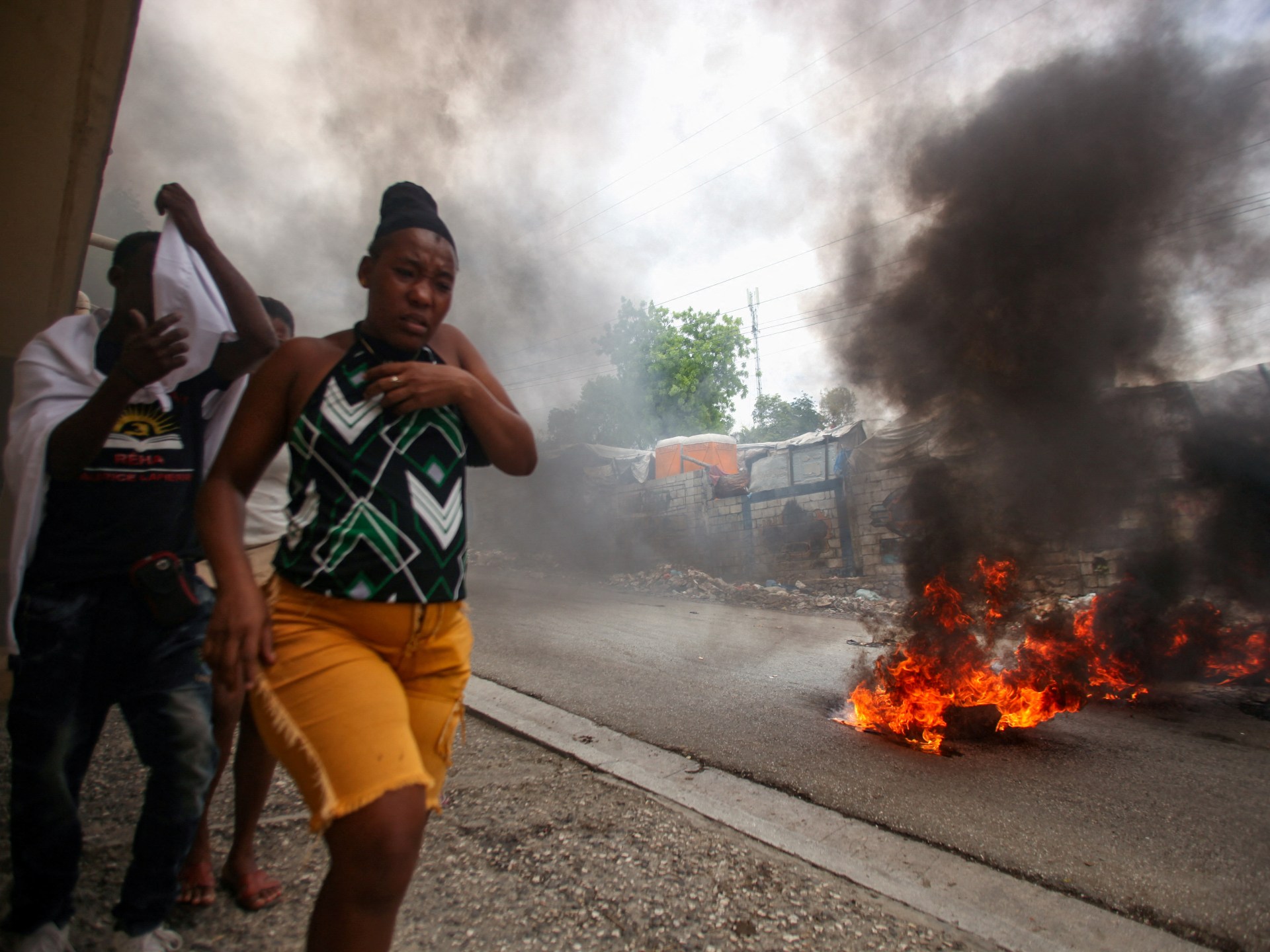
The security situation in Haiti is in “free fall”, Human Rights Watch (HRW) has warned, as armed groups continue to unleash deadly violence in the capital and other areas across the Caribbean nation.
In a statement on Thursday, HRW said criminal gangs have escalated their attacks in Port-au-Prince since late last year, and only 10 percent of the city remains under government control.
“Haiti’s security situation is in a free fall and Haitians are suffering horrific abuses,” said Nathalye Cotrino, the rights group’s senior Americas researcher.
The country has reeled from years of violence as powerful armed groups, often with ties to the country’s political and business leaders, have vied for influence and control of territory.
But the situation worsened dramatically after the July 2021 assassination of Haitian President Jovenel Moise, which created a power vacuum.

In 2024, the gangs launched attacks on prisons and other state institutions across Port-au-Prince, fuelling a renewed political crisis.
The campaign of violence led to the resignation of Haiti’s unelected prime minister, the creation of a transitional presidential council, and the deployment of a United Nations-backed, multinational police mission.
That Kenya-led police force – formally known as the Multinational Security Support Mission (MSS) – has failed to take control back from the gangs, however. Observers say the mission has been underfunded and ill-equipped.
Recently, so-called “self-defence” groups have formed in response to the armed gangs, leading to more deadly violence.
Protests have also broken out in Port-au-Prince against the country’s transitional presidential council, which has been unable to restore security. On April 7, the authorities declared a new, one-month state of emergency amid the violence.
“Declaring emergencies without equipping police with necessary resources, like effective armored vehicles, will not solve the insecurity crisis,” the National Human Rights Defense Network, a leading Haitian rights group, said in a recent report.
“The absence of state response has turned the police into firefighters—constantly reacting without strategic direction—while towns fall one after another,” the group said.

‘Why is no one helping us?’
According to UN figures, at least 1,518 people were killed and another 572 were injured between January 1 and March 27 in gang attacks, security force operations, and acts of violence committed by the “self-defence” groups and others.
Speaking to HRW, an aid worker in Haiti said people “no longer have a safe place” to go.
“Women … seeking help have not only lost loved ones, but have also been raped, displaced and left on the streets, starving and struggling to survive. We don’t know how much longer they can endure such suffering,” the aid worker said.
“All [victims] ask is for the violence to stop. With no support from the police or government, they feel abandoned. They ask, ‘Why is no one helping us? Why do Haitian lives not matter if we are human too?’”
The UN also says more than 1 million Haitians have been displaced by the violence, while half of the country – some 5.5 million people – face acute food insecurity.
In early April, Save the Children reported that more than 40,000 children were among those displaced in the first three months of 2025.
“Children in Haiti are trapped in a nightmare,” the group’s Haiti country director, Chantal Sylvie Imbeault, said in a statement.
“They are living in deadly areas controlled by armed groups, being robbed of a normal childhood, and at constant risk of recruitment—while humanitarian aid struggles to reach them,” she said.
“As displacement continues to soar, shelters are becoming completely overcrowded, leaving children vulnerable to disease, exploitation, and sexual violence.”
Conflict Zones
A nation behind bars: Why has Israel imprisoned 10,000 Palestinians? | Israel-Palestine conflict News
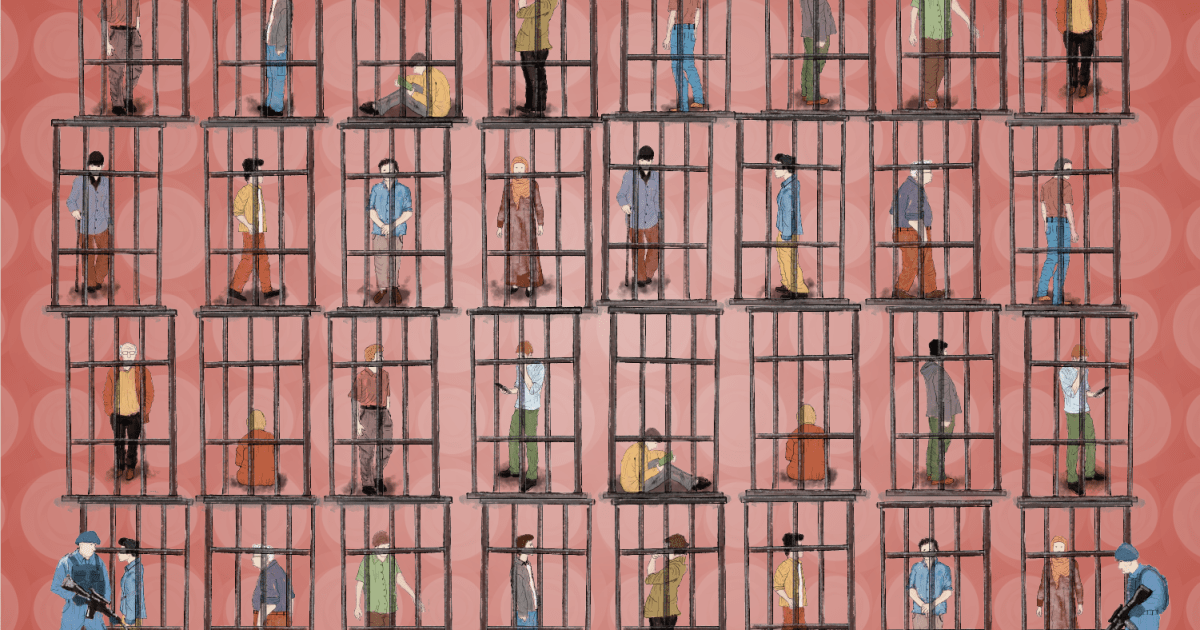
On April 17 every year, Palestinian Prisoner’s Day is commemorated to highlight the plight of those held in Israeli jails and their struggle for freedom against Israel’s continued occupation of their land.
The day marks the 1974 release of Mahmoud Bakr Hijazi, the first Palestinian freed in a prisoner swap with Israel. It was later designated to honour all Palestinian prisoners and highlight Israel’s ongoing detention of Palestinians and violation of their rights.
There are currently nearly 10,000 Palestinians held in Israeli jails in Israel and the occupied territory, according to prisoners’ rights group Addameer. To Palestinians, they are political prisoners who must be freed.

Of those in detention:
3,498 are held without charge or trial
400 are children
27 are women
299 are serving life sentences
Administrative detainees, including women and children, can be held by the military for renewable six-month periods based on “secret evidence” that neither the detainee nor their lawyer is allowed to see.
400 child prisoners – Ahmad Manasra’s case
Israel is the only country in the world that tries children in military courts, often denying them their basic rights.
According to Defense for Children Palestine, about 500 to 700 Palestinian children are detained and prosecuted in the Israeli military court system each year – some as young as 12.
The most common charge is throwing stones, a crime punishable under military law by up to 20 years in prison.
Currently, 400 Palestinian children remain in Israeli prisons, most are in pre-trial detention and have not been convicted of any offence.
One of the most harrowing child prisoner cases is that of Ahmad Manasra, who was arrested at the age of 13, brutally interrogated and then sentenced.

Ahmad was with his cousin Hassan, who allegedly stabbed two Israeli settlers near an illegal Israeli settlement in occupied East Jerusalem in 2015.
Hassan, who was 15 at the time, was shot and killed by an Israeli civilian, while Ahmad was severely beaten by an Israeli mob and run over by a car.
He suffered fractures to his skull and internal bleeding.
At the time, Israeli law stated that children under 14 could not be held criminally responsible.
To circumvent this, Israeli authorities waited until Manasra turned 14 to sentence him. The law was changed in August 2016 to allow the prosecution of younger children.
Ahmad was charged with attempted murder and sentenced to 12 years in prison. The sentence was later reduced to 9.5 years.
Ahmad has long suffered from mental health issues. At the end of 2021, a psychiatrist from Doctors Without Borders (MSF) was allowed to visit him and diagnosed him with schizophrenia. This was the first time an external doctor was allowed to see him.
On April 10, 2025, after spending more than nine years behind bars, Ahmad was finally released.
Palestinian prisoners doubled since October 7
From October 2023, when Hamas led an attack on southern Israel and Israel then began its war on Gaza, to April 2025, the number of Palestinian political prisoners doubled, rising from 5,250 to nearly 10,000.

One Palestinian freed, fifteen detained
Since October 7, Israel has detained about 30,000 Palestinians. During the prisoner-captive exchanges with Hamas, Israel has released just more than 2,000 Palestinian prisoners.
That means, for every person released, 15 others were apprehended.
During the most recent ceasefire exchange earlier this year, 739 Palestinians from Gaza were freed, that’s out of 15,000 that had been detained. While in the occupied West Bank, 652 were released, but nearly 14,500 have been detained.

Ceasefire prisoner-captive exchange
During the nearly two-month ceasefire earlier this year, Israel released 1,793 Palestinian political prisoners, while Hamas freed 38 Israeli captives, including eight bodies.
The majority of those released were from Gaza, with 739 freed – 337 from North Gaza, 227 from Gaza City, and 151 from Khan Younis, some of the war’s hardest-hit areas. In the occupied West Bank, at least 652 prisoners were released, with most coming from Ramallah (118), Hebron (111), and Nablus (79).

One million Palestinians detained since 1967
Israel’s detention policies have deeply affected Palestinian life for decades. According to the Palestinian Commission of Detainees and Ex-Detainees Affairs, since 1967, Israeli forces have detained an estimated one million Palestinians, or approximately 20 percent of the Palestinian population. Statistically, this means one out of every five Palestinians has been imprisoned at some point in their life.
For many families, arrest has become an inevitability. This systemic practice has fragmented communities, perpetuated cycles of trauma, and generated widespread resentment.
As Israel’s arrest campaign continues, many Palestinians fear that mass imprisonment is not just a byproduct of occupation but a deliberate tool of control. For the thousands currently behind bars, freedom remains uncertain, just as it has for generations before them.

Conflict Zones
Fifty years after fall of Phnom Penh, history weighs on Cambodian politics | Conflict News
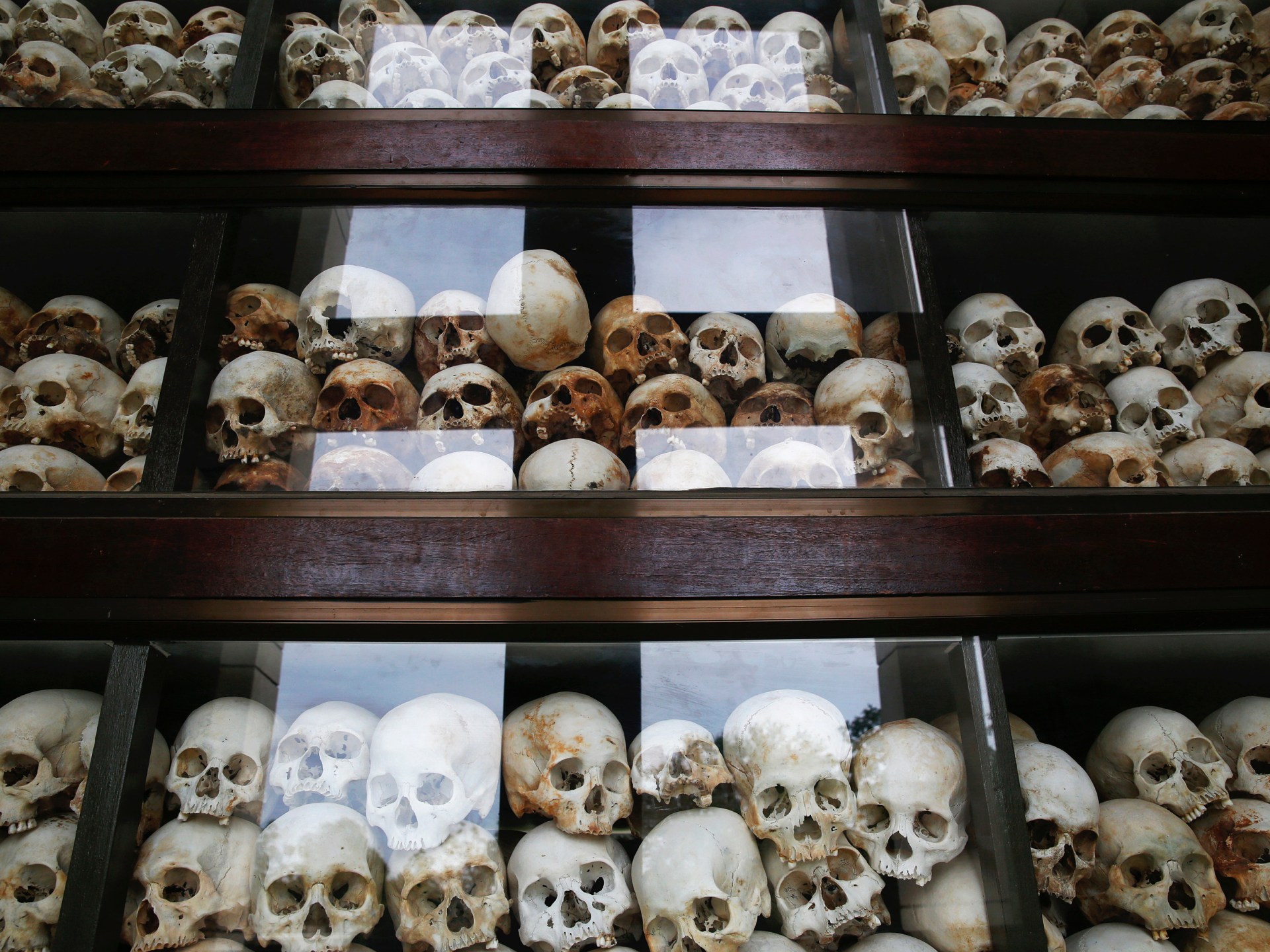
Fifty years after the fall of Phnom Penh to the Khmer Rouge rebel army, the events of April 17, 1975 continue to cast a long shadow over Cambodia and its political system.
Emerging from the bloodshed and chaos of the spreading war in neighbouring Vietnam, Pol Pot’s radical peasant movement rose up and defeated the United States-backed regime of General Lon Nol.
The war culminated five decades ago on Thursday, with Pol Pot’s forces sweeping into Cambodia’s capital and ordering the city’s more than two million people into the countryside with little more than the belongings they could carry.
With Cambodia’s urban centres abandoned, the Khmer Rouge embarked on rebuilding the country from “Year Zero”, transforming it into an agrarian, classless society.
In less than four years under Pol Pot’s rule, between 1.5 and three million people were dead. They would also almost wipe out Cambodia’s rich cultural history and religion.
Many Cambodians were brutally killed in the Khmer Rouge’s “killing fields”, but far more died of starvation, disease and exhaustion labouring on collective farms to build the Communist regime’s rural utopia.
In late December 1978, Vietnam invaded alongside Cambodian defectors, toppling the Khmer Rouge from power on January 7, 1979. It is from this point onwards that popular knowledge of Cambodia’s contemporary tragic history typically ends, picking up in the mid-2000s with the start of the United Nations-backed war crimes tribunal in Phnom Penh, where former regime leaders were put on trial.
For many Cambodians, however, rather than being relegated to history books, the 1975 fall of Phnom Penh and the toppling of the Khmer Rouge in 1979 remain alive and well, embedded in the Cambodian political system.
That tumultuous Khmer Rouge period is still used to justify the long-running rule of the Cambodian People’s Party (CPP) under varying forms since 1979, and the personal rule of CPP leader Hun Sen and his family since 1985, according to analysts. It was the now ageing senior leadership of the CPP who joined with Vietnamese forces to oust Pol Pot in 1979.
While memories of those times are fading, the CPP’s grip on power is as firm as ever in the decades since the late 1970s.
‘The making of a political system’
The ruling CPP see “themselves as the saviour and the guardian of the country”, said Aun Chhengpor, a policy researcher at the Future Forum think tank in Phnom Penh.
“It explains the making of a political system as it is today,” he said, noting that the CPP has long done what it required to “ensure that they are still there at the helm … at any cost”.
Most Cambodians have now accepted a system where peace and stability matter above all else.
“There seems to be an unwritten social contract between the ruling establishment and the population that, as long as the CPP provides relative peace and a stable economy, the population will leave governance and politics to the CPP,” Aun Chhengpor said.
“The bigger picture is how the CPP perceives itself and its historic role in modern Cambodia. It’s not that different from how the palace-military establishment in Thailand or the Communist Party in Vietnam see their roles in their respective countries,” he said.

The CPP headed a Vietnamese-backed regime for a decade, from 1979 to 1989, bringing relative order back to Cambodia after the Khmer Rouge, even as fighting persisted in many parts of the country as Pol Pot’s fighters tried to reassert control.
With support dwindling from the Soviet Union in the last days of the Cold War and an economically and militarily exhausted Vietnam withdrawing from Cambodia, Hun Sen, by then the leader of the country, agreed to hold elections as part of a settlement to end his country’s civil war. From 1991 to 1993, Cambodia was administered by the UN Transitional Authority in Cambodia (UNTAC).
The Cambodian monarchy was formally re-established, and elections were held for the first time in decades in 1993. The last Khmer Rouge soldiers surrendered in 1999, symbolically closing a chapter on one of the 20th century’s bloodiest conflicts.
Despite a bumpy road forward, there were initial hopes for Cambodian democracy.
The royalist National United Front for an Independent, Neutral, Peaceful and Cooperative Cambodia Party – better known by its acronym FUNCINPEC – won the UN-administered elections in 1993. Faced with defeat, the CPP refused to cede power.
The late King Norodom Sihanouk stepped in to broker an agreement between both sides that preserved the hard-won peace and made the election a relative success. The international community breathed a sigh of relief as the UNTAC mission in Cambodia had been the largest and costliest at that time for the world body, and UN member states were desperate to declare their investment in nation rebuilding a success.
Ruling jointly under a power-sharing agreement with CPP and FUNCINPEC co-prime ministers, the unsteady alliance of former enemies held for four years until ending in a swift and bloody coup by Hun Sen in 1997.
Mu Sochua, an exiled opposition leader who now heads the nonprofit Khmer Movement for Democracy, told Al Jazeera that the CPP’s resistance to a democratic transfer of power in 1993 continues to reverberate throughout Cambodia today.
“The failure of the transfer of power in 1993 and the deal the King made at the time … was a bad deal. And the UN went along because the UN wanted to close shop,” she told Al Jazeera from the US, where she lives in exile after being forced to flee the CPP’s intensifying authoritarianism at home.
“The transitional period, the transfer of power … which was the will of the people, never happened,” Mu Sochua said.
End of warfare does not mean the beginning of peace
Following the coup in 1997, the CPP did not come close to losing power again until 2013, when they were challenged by the widely popular Cambodian National Rescue Party (CNRP).
By the time of the next general election in 2018, the CNRP was banned from politics by the country’s less-than-independent courts, and many of the opposition leaders were forced to flee the country or ended up in prison on politically motivated charges.
Unhindered by a viable political challenger, Hun Sen’s CPP went on to win all seats in the 2018 national election, and all but five of the 125 parliamentary seats contested during the last general election in 2023.

The CPP has also firmly aligned with China, and the country’s once vibrant free press has been shut down, and civil society organisations cowed into silence.
After notching up 38 years in power, Hun Sen stepped aside as prime minister in 2023 to make way for his son Hun Manet – a sign that the CPP-led political machine has eyes on dynastic, multi-generational rule.
But new challenges have emerged in Cambodia’s post-war decades of relative prosperity, huge inequality and de facto one-party rule.
Cambodia’s booming microcredit industry was intended to help lift Cambodians out of poverty, but the industry has instead burdened families with high levels of personal debt. One estimate put the figure at more than $16bn in a country with a population of just 17.4 million and a gross domestic product (GDP) of $42bn in 2023, according to World Bank estimates.
Aun Chhengpor told Al Jazeera there are signs the government is taking note of these emerging issues and demographic changes.
Hun Manet’s cabinet is shifting towards “performance-based legitimacy” because they lack the “political capital” once bestowed by the public on those who liberated the country from the Khmer Rouge.
“The proportion of the population that remembers the Khmer Rouge, or that has usable memories of that period, is shrinking year by year,” said Sebastian Strangio, author of Hun Sen’s Cambodia.
“I don’t think [the CPP ‘s legacy] is sufficient for the majority of the population born since the end of the Cold War,” Strangio told Al Jazeera.
Now, there even appears to be room for a limited amount of popular opposition, analyst Aun Chhengpor said.
In January, Cambodian farmers blockaded a main highway to protest against the low prices of their goods, suggesting there may be “some space” in the political system for localized dissent on community-based issues, he said.
“[It] will be an uphill struggle for the fractured political opposition to thrive – not to mention to organise among themselves and, let alone, have the hope of winning a general election,” Aun Chhengpor said.
“However, there are indications that the CPP still somehow believes in the multiparty system and limited democracy in the way that they can have a say on when and how much democracy,” he added.
Speaking in exile from the US, Mu Sochua had a dimmer view of Cambodia’s situation.
The same month as the farmer protests in Cambodia, a former Cambodian opposition member of parliament was shot dead in broad daylight on a street in Thailand’s capital, Bangkok.
The brazen assassination of Lim Kimya, 74, a dual Cambodian-French citizen, recalled memories of the chaotic political violence of the 1990s and early 2000s in Cambodia.
Peace and stability, Mu Sochua said, exist only on the surface in Cambodia, where still waters run deep.
“If politics and the space for people to engage in politics is non-existent, what dominates then is not peace,” she said.
“It’s still the feeling of war, of insecurity, of the lack of freedom,” she told Al Jazeera.
“After the war, 50 years later, at least there is no bloodshed, but that alone does not mean there is peace.”
-
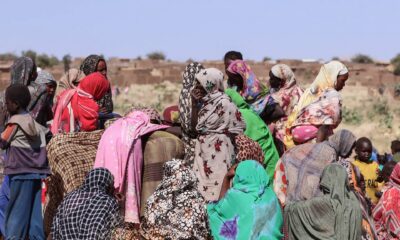
 Conflict Zones2 days ago
Conflict Zones2 days agoAfter two years of war in Sudan, the world can no longer plead ignorance | Conflict
-

 Conflict Zones17 hours ago
Conflict Zones17 hours agoHaiti in ‘free fall’ as violence escalates, rights group warns | Armed Groups News
-

 Education2 days ago
Education2 days agoTrump administration revokes humanitarian parole of Spanish teacher
-
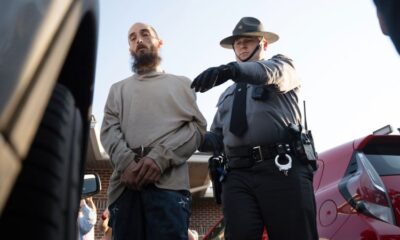
 Europe2 days ago
Europe2 days agoCody Balmer, the suspect in arson at Pennsylvania governor’s home targeted the governor for his views on war in Gaza, warrant says
-
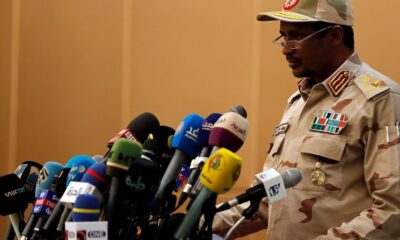
 Africa2 days ago
Africa2 days agoSudan: Rapid Support Forces leader announces rival government
-
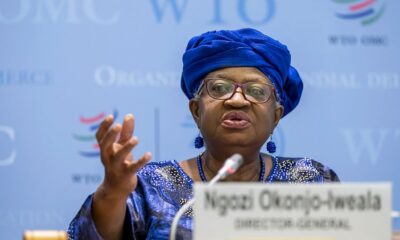
 Africa2 days ago
Africa2 days agoWorld Trade Organization says global trade could slide this year due to tariffs
-

 Sports2 days ago
Sports2 days agoNew Orleans Saints win lawsuit over fleur-de-lis trademark filed by ‘direct descendant of the Kings of France’
-

 Sports2 days ago
Sports2 days agoStephen Curry and Jimmy Butler lift the Warriors past the Grizzlies and into the NBA Playoffs




